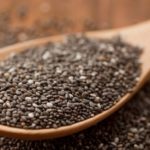Taro, or more commonly known as “củ năng” in Vietnamese, is a familiar root vegetable in Southeast Asian cuisine. Not only is it a delicious ingredient, but it also boasts an array of health benefits, earning its reputation as a medicinal plant in traditional Eastern medicine.
For further reference:
1 What is Taro?

Taro, also known as Mã thầy or bột tề in Vietnamese, is a versatile root vegetable native to Southeast Asia. It is widely used in cooking and is also revered for its medicinal properties in Eastern medicine.
Taro has a distinctive round, flat shape, similar to an onion, but with a thick, black skin and white flesh. When eaten raw, taro has a sweet and crisp taste, reminiscent of corn, with a refreshing, juicy texture.
Taro is cultivated in many parts of the world, including Asia, Australia, tropical Africa, and various islands in the Pacific and Indian Oceans. This root vegetable is packed with essential nutrients such as vitamins, iron, magnesium, and potassium, offering a plethora of health benefits.
For additional information:
2 The Benefits of Taro
Taro is not only nutritious but also boasts a range of therapeutic properties. Here are some of its notable health benefits:
Hangover Relief

Too much alcohol can leave your stomach feeling hot and uncomfortable. A simple remedy is to blend taro with a squeeze of lemon and a pinch of salt. This drink helps neutralize the toxins from alcohol and provides relief from the adverse effects of overindulgence.
Heart Health

Taro is rich in healthy fatty acids, particularly linoleic acid, which is known to promote cardiovascular health and support neural development in children.
Gut Health
The fiber and starch in taro are slowly digested, making it an excellent food for improving gut health and addressing digestive issues.
Antibacterial Properties
Taro contains flavonoids and polyphenolic compounds, which have been shown to inhibit viral and cancerous activities in the body. These compounds also aid in improving stomach function, treating insomnia, and alleviating general discomfort.
Appetite Stimulant

Consuming raw taro or drinking its juice can help stimulate appetite in the elderly, addressing their common issue of poor eating habits.
3 Precautions when Consuming Taro
Despite its numerous benefits, it’s important to note that taro has a cold nature according to Eastern medicine. Therefore, it may not be suitable for individuals with a cold body constitution, characterized by symptoms such as aversion to cold, cold hands and feet, abdominal pain after consuming cold or raw foods, loose stools, frequent colds, and slow digestion.
Raw taro can be dangerous as it may harbor parasitic larvae, which can enter the body through the mouth and cause gastrointestinal issues. Always peel and cook taro thoroughly before consumption. Additionally, it’s recommended to limit taro intake to once or twice a week to avoid any adverse effects on digestion. Make sure to remove the entire stem area to eliminate any potential hiding places for parasites.
Now that we’ve explored the benefits and precautions of taro, we hope you have a better understanding of this versatile root vegetable. Remember to consume taro in moderation and always practice proper preparation techniques!






































